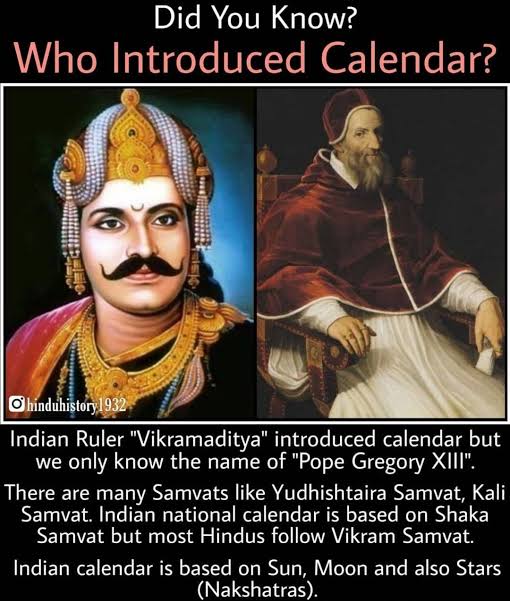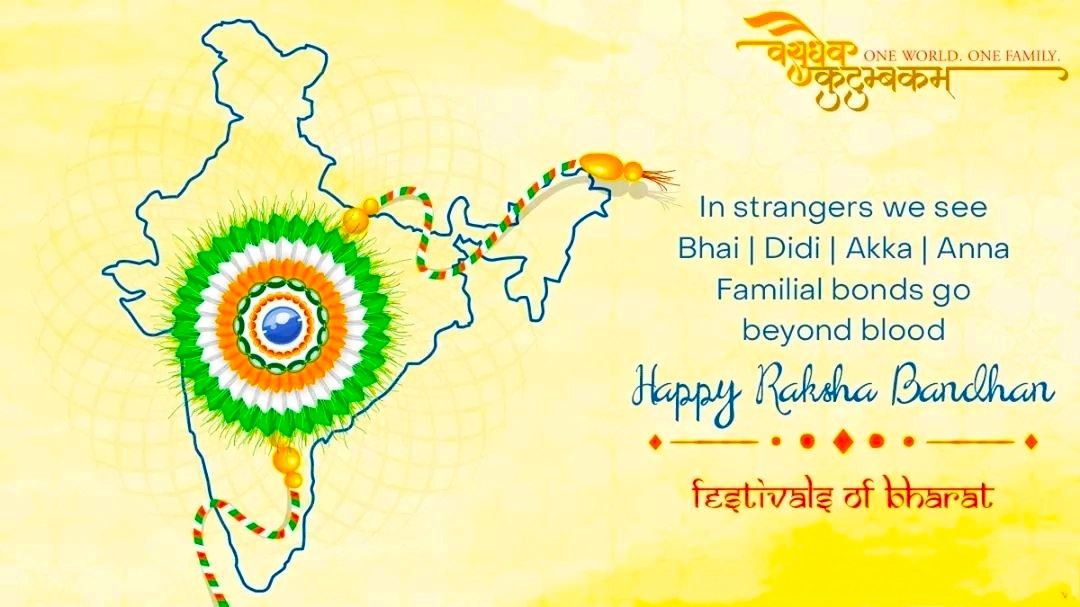Bharatiya Calendar (Hindustan Panchang)
There are 12 months in Bharatiya Calendar
( Hindustan Panchang )
Vaisakha (31 Days) Begins April 21
Jyaistha (31 Days) Begins May 22
Asadha (31 Days) Begins June 22
Shravana (31 Days) Begins July 23
Bhadra (31 Days) Begins August 23
Asvina (30 Days) Begins September 23
Kartika (30 Days) Begins October 23
Agrahayana (30 Days) Begins November 22
Pausa (30 Days) Begins December 22
Magha (30 Days) Begins January 21
Phalguna (30 Days) Begins February 20
* Leap years
* Leap years
Year: Samvat
Samvat refers to era of the several Hindu calendar systems in Bharat and Nepal, in a manner the 0 AD marks the Christian era and the BC/AD system. There are several samvat found in historic Hindu , Jaina & Buddhist texts and epigraphy, of which three are most significant: Vikrama era, Old Shaka era and Shaka era of 78 AD.
The Hindu calendar saka samvat system is found in Indonesian inscriptions, such as the above dated to 611 CE.
Vikram Samvat: A northern India almanac which started in 57 BCE, and is also called the Vikrama Era. It is related to the Bikrami calendar, and is linked to Vikramaditya. This system is common in epigraphic evidence from northern, western, central and eastern Indian subcontinent, particularly after the early centuries of the 1st millennium CE.
Shaka Samvat: There are two Shaka era system in scholarly use, one is called Old Shaka Era, whose epoch is uncertain, probably sometime in the 1st millennium BCE because ancient Buddhist, Jaina and Hindu inscriptions and texts use it. However, the starting point of Old Shaka Era is a subject of dispute among scholars. The second system is called Saka Era of 78 AD, or simply Saka Era, a system that is common in epigraphic evidence from southern India.
Saka era of Southeast Asia: The Hindu calendar system in Indonesia is attributed to the legend of Hindus arriving with a sage Aji Saka in the 1st century Java, in the March of 78 CE. Numerous ancient and medieval era texts and inscriptions found in Indonesian islands use this reference year.
In mainland southeast Asia, the earliest verifiable use of Hindu Saka methodology in inscriptions is marked Saka 533 in Ankor Borei, which corresponds to 611 CE, while in the Indonesian islands, the Kedukan Bukti inscription in Sumatra, marked to Saka 605 (683 CE) is one of the earliest known. However, these inscriptions set the floruit, and the Hindu calendaring methodology likely existed in southeast Asia before these dates to be used in important monuments. Further, the Hindu calendar system remained popular among the Hindus through about the 15th century, and thereafiter in Bali Indonesia.
Indian national calendar (modern): combined many Hindu calendars into one official standardized one, but old ones remain in use.
1. Chaitra
The month of Chaitra is also associated with the coming of Spring, since Holi, the spring festival of colour, is celebrated on the eve of Chaitra (namely, the last day of Phalgun month). Exactly 6 days after which the festival of Chaiti Chhath is observed.
In lunar religious calendars, Chaitra begins with the new moon in March/April and is the first month of the year. The first of Chaitra – is celebrated as New Year's Day, known as Gudi Padwa in Maharashtra, Chaitrai Vishu and Ugadi in Karnataka and Andhra Pradesh.
Other important festivals in the month are; Ram Navami, the birth anniversary of Bhagwan Shri Ram celebrated on the 9th day of Chaitra, and Hanuman Jayanti that falls on the last day (purnima) of Chaitra.
The harvest festival of (Baisakhi) is celebrated in this month. Vaisakha Purnima is celebrated as Buddha Purnima or the birthday of Gautama Buddha or the Theravada school. Purnima refers to the Full Moon. Known in Sinhalese as Vesak, it is observed in the full moon of May
3.Jyaiṣṭha
Vat Pournima is a celebration observed in Maharashtra and Karnataka, Hindustan . It is celebrated on the full moon day (the 15th) of the month of Jyeshtha on the Hindu Calendar, which falls in June on the Gregorian Calendar. Women pray for their husbands by tying threads around a banyan tree on this day. It honors Savitri, the legendary wife of Satyavan who escaped death for her husband's life.
Snana Yatra is a bathing festival celebrated on the Purnima the Hindu month of Jyeshtha. It is an important festival of the Jagannath cult. The deities Jagannath, Balabhadra, Subhadra, Sudarshan, and Madanmohan are brought out from the Jagannath Temple (Puri) and taken in a procession to the Snana Bedi. They are ceremonially bathed and decorated for a public audience.
Guru Purnima, a festival dedicated to the Guru, is celebrated on the Purnima (Full Moon) day of the month. Prior to it Shayani Ekadashi, is observed on the eleventh lunar day (Ekadashi) of the bright fortnight.
5. Shravana
Shravana(jupaka) is considered to be a holy month in the Hindu calendar due to the many festivals that are celebrated during this time. Krishna Janmashtami, marking the birth of Krishna, falls on the 8th day after the full moon. Raksha Bandhan, the festival of brothers and sisters, is celebrated on Shraavana Poornima (Full Moon). This day in Maharashtra is also celebrated as Narali Poornima (Naral in Marathi language means coconut). In the coastal regions of Maharashtra i.e. Konkan, a coconut is offered to the sea for calming it down after the monsoon season. Fishermen now start fishing in the sea after this ceremony. Nag Panchami is also celebrated in many parts of India on the fifth day after Amavasya of Shraavana month. The snake god Nāga is worshiped. The last day of the Shraavana is celebrated as Pola, where the bull is worshiped by farmers from Maharashtra.
In TamilNadu (& also in Kerala) Aadi Amavasaya is celebrated with great importance in all temples. It is an equivalent to Mahalaya Amavasaya of north India.In Karnataka Basava Panchami is celebrated on 5th day after amavasya.
Shravani Mela is a major festival time at Deoghar in Jharkhand with thousands of saffron-clad pilgrims bringing holy water around 100 km on foot from the Ganges at Sultanganj.Shravan is also the time of the annual Kanwar Yatra, the annual pilgrimage of devotees of Shiva, known as Kanwaria make to Hindu pilgrimage places of Haridwar, Gaumukh and Gangotri in Uttarakhand to fetch holy waters of Ganges River
6. Bhādrapada or Bhādra also Proṣṭhapada
In lunar religious calendars, Bhadra begins on the new moon in August/September and is the sixth month of the year. The festival of Ganesha Chaturthi, celebrating the birthday of Ganesha, is observed from the 4-10 Bhadrapada in the bright fortnight and is the main holiday of the year in Maharashtra and other state of Bharat .
Anant Chaturdashi is a Jain observance is performed on the fourteenth day (Chaturdashi) of the bright fortnight (Shukla paksha) of Bhadrapad month.
Madhu Purnima (Bengali for 'honey full-moon') is a Buddhist festival celebrated in India and Bangladesh, especially in the region of Chittagong. It occurs on the day of the full moon in the month of Bhadro (August/September).
7.Ashwin
Ashwin is the 7th lunar month in Hindu calendar.In Hindu Calendar, there are two methods to mark the lunar month. In one, lunar month is marked from Purnima to Purnima (known as Purnimanta calendar) and in other lunar month is marked from Amavasya to Amavasya (known as Amanta calendar).
Several major religious holidays take place in Ashvin, including Durga Puja (6-10 Ashvin), Dasehra (10 Ashvin) and Deepawali (29 Ashvin), Kojagiri festivals and Kali Puja (new moon of Ashvin)
8. Kartika
Vaikuṇṭha Ekādaśī, the Ekādaśī (i.e. 11th lunar day) of this Mārgaśīṣa month, is celebrated also as Mokṣadā Ekādaśī. The 10th Canto, 22nd Chapter of Bhāgavata Purāṇa, mentions young marriageable daughters (gopis) of the cowherd men of Gokula, worshiping Goddess Kātyāyanī and taking a vrata or vow, during the entire month of Mārgaśīṣa, the first month of the winter season (Śiśira), to get Śrī Kṛṣṇa as their husband.
Kālabhairava Aṣṭamī (or Kālabhairava Jayanti) falls on Kṛṣṇa Pakṣa Aṣṭamī of this month of Mārgaśīṣa. On this day it is said that Mahadev Śiva appeared on earth in the fierce manifestation (avatāra) as Śrī Kālabhairava. This day is commemorated with special prayers and rituals.
In lunar Hindu calendars, Pausha (also called Paush or Poush maas) begins with either the full or new moon in December and is the ninth month of the year. Since it follows the lunar cycle, its start and end varies year by year unlike the solar cycle Hindu calendars. Pausha is a winter (Shishir Ritu) month. The Hindu lunar month Pausha overlaps with its solar month Dhanu in the Hindu lunisolar calendars.
11. Magha
Vasant Panchami, sometimes referred to as Saraswati Puja, Shree Panchami, or the Festival of Kites is a Sikh and Hindu festival held on the fifth day of Magha (in early February) marking the start of spring and the Holi season. On this day Hindus worship Saraswati, the goddess of knowledge, music, art and culture.
Ratha Saptami or Rathasapthami is a Hindu festival that falls on the seventh day (Saptami) in the bright half (Shukla Paksha) of the Hindu month Maagha. It marks the seventh day following the Sun’s northerly movement (Uttarayana) of vernal equinox starting from Capricorn (Makara).
12.Phalguna
Most parts of Hindustan ( Bharat / India ) see early celebration of the famous Hindu festival Holi in this month. Holi is celebrated at the end of the winter season on the last full moon day of the lunar month Phalguna (Phalguna Purnima), which usually falls in the later part of February or March.
The Hindu festival of Shigmo is also celebrated in Goa and Konkan in the month of Phalguna. Celebrations can stretch over a month.

























































This blog is very helpful to find out the Holi Gulal Hindu Festival.
ReplyDeleteThank you for shared 12 months in Hindu Lunar... I am looking for Marathi Calendar Eescially Kalnirnay 2024 with pdf version..
ReplyDelete